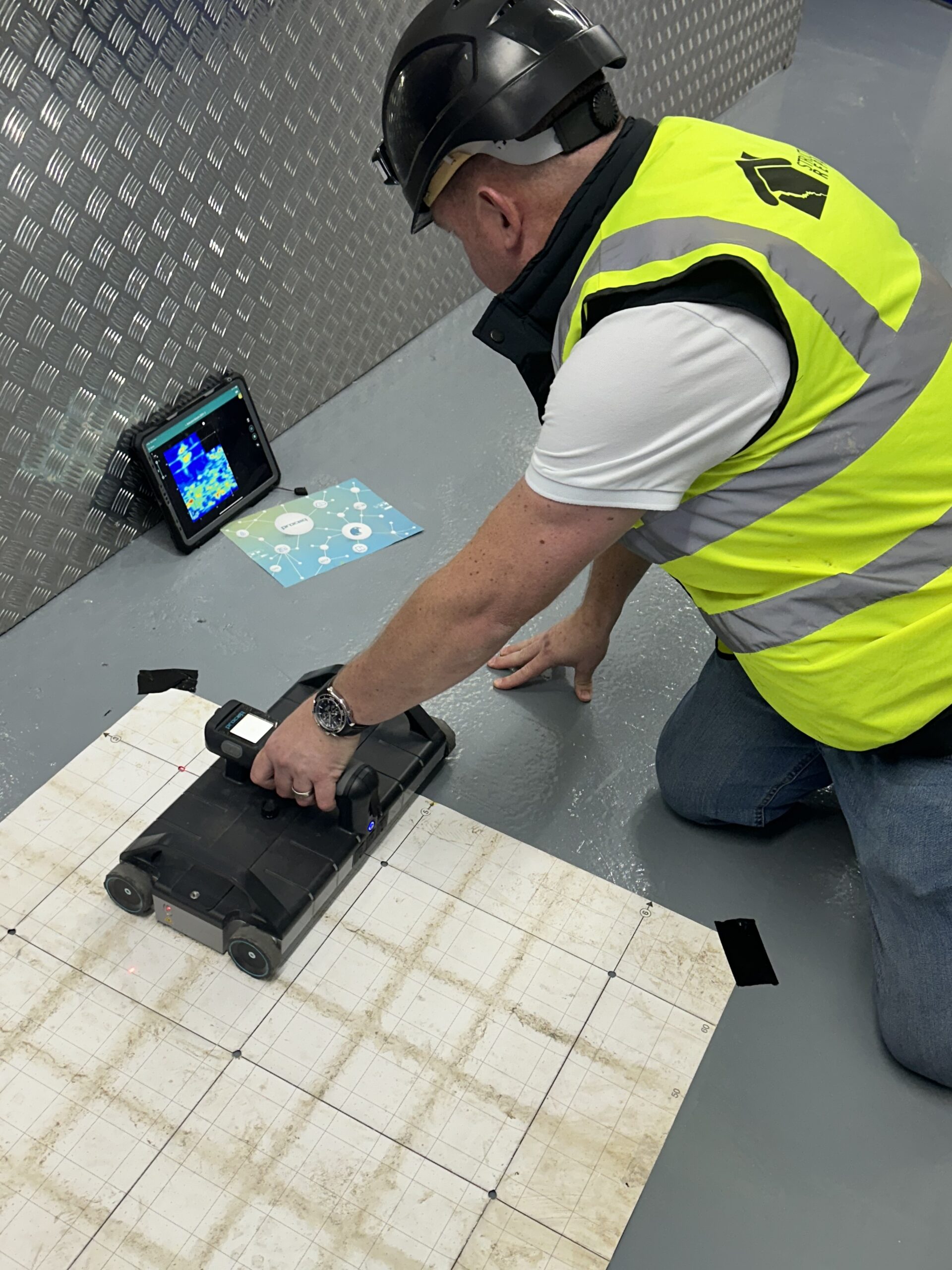RainierGPR Concrete Scanning: Professional Insights and Ideal Practices
RainierGPR Concrete Scanning: Professional Insights and Ideal Practices
Blog Article
Exploring the Depths: A Comprehensive Overview to Concrete Scanning and Its Diverse Applications
In the realm of building and construction and framework development, the thorough process of concrete scanning holds a critical duty in making certain the structural integrity and security of tasks. As technology continues to develop, the applications of concrete scanning have actually broadened much past simple surface-level analyses.
Significance of Concrete Scanning
Understanding the significance of concrete scanning is essential in ensuring the safety and security and stability of structures during construction and remodelling tasks. Concrete scanning utilizes innovative innovations such as ground-penetrating radar (GPR) and electro-magnetic induction to identify ingrained items, voids, or various other anomalies within concrete structures - RainierGPR Concrete Scanning. By performing thorough scans prior to boring, reducing, or coring right into concrete, building groups can avoid unintended damages to essential architectural aspects like rebar, avenues, or post-tension cords. This aggressive method not only protects against costly repairs and job delays but additionally improves overall building and construction security by alleviating the threat of architectural failings or collapses as a result of compromised stability.
Additionally, concrete scanning plays an essential function in making sure conformity with building regulations and policies that mandate the defense of existing structural parts throughout building tasks. By accurately mapping out the inner structure of concrete, scanning modern technologies make it possible for construction experts to make informed decisions that maintain the structural stability and toughness of buildings and framework tasks. Essentially, the value of concrete scanning hinges on its capability to secure both the structural integrity and the workers associated with construction undertakings.
Technologies Utilized in Concrete Scanning
Concrete scanning counts on innovative technologies such as ground-penetrating radar (GPR) and electro-magnetic induction to properly identify ingrained things and anomalies within concrete frameworks. Ground-penetrating radar operates by discharging high-frequency electro-magnetic waves into the concrete.
Electro-magnetic induction, on the other hand, works by generating electromagnetic fields around a concrete structure with a transmitter coil. When steel objects exist within the concrete, they disrupt these electromagnetic areas, creating eddy currents to stream through the metal. By measuring the adjustments in the magnetic fields with a receiver coil, the system can pinpoint the place of metal objects in the concrete.
These innovative innovations play a crucial function in non-destructive testing, ensuring the safety and honesty of concrete structures in numerous markets.
Applications in Building Market
Within the building industry, concrete scanning technology discovers diverse applications that boost task performance and safety and security. One vital application is the discovery of rebar, post-tension cables, and various other embedded things prior to exploration or cutting right into concrete structures. By properly drawing up these elements, building and construction groups can prevent expensive damages, ensure structural stability, Go Here and prevent prospective security hazards. Additionally, concrete scanning is used for locating gaps, such as air pockets or areas of deterioration within concrete, which can compromise the overall stamina of a structure. By recognizing these gaps early, building experts can take essential actions to resolve them and keep the durability of the structure. Concrete scanning plays a crucial function in high quality control by validating the density of concrete covers over reinforcement, making certain compliance with design requirements and requirements. Overall, the applications of concrete scanning in the building and construction industry contribute dramatically to improving task operations, minimizing threats, and supplying top quality outcomes.

Security Advantages of Concrete Scanning
In the world of building safety, the implementation of concrete scanning technology provides a critical advantage in preemptively identifying prospective hazards and strengthening structural integrity. By using advanced scanning methods such as ground-penetrating radar (GPR) and electromagnetic induction, building and construction groups can accurately locate rebar, post-tension cables, avenues, and other surprise objects within concrete structures. This proactive approach significantly decreases the threat of unintentional strikes throughout drilling, cutting, or coring activities, therefore stopping costly damages, injuries, and job delays.
Moreover, concrete scanning enhances worker security by providing real-time information about the structural problem of concrete components. By resolving prospective safety and security concerns without delay, concrete scanning contributes to creating a secure functioning see post environment and mitigating the possibility of architectural failings or crashes on construction sites.
Future Trends in Concrete Scanning
Emerging innovations in scanning modern technology are poised to transform the field of concrete inspection and analysis. By utilizing the power of AI, these systems can assess huge quantities of data collected during scanning processes to provide even more exact and detailed understandings right into the problem of concrete frameworks.
Another significant pattern is the advancement of find more information even more straightforward and mobile scanning devices. Miniaturization of scanning equipment permits simpler accessibility to restricted rooms and remote areas, making inspections extra reliable and detailed. In addition, improvements in cordless communication technologies make it possible for real-time information transfer and analysis, promoting quicker decision-making processes.
Furthermore, there is an expanding concentrate on sustainability in concrete scanning innovations - RainierGPR Concrete Scanning. Suppliers are progressively integrating environment-friendly products and energy-efficient functions into their devices to reduce environmental effect. These future fads are set to enhance the efficiency, accuracy, and sustainability of concrete scanning methods, forming the sector's future landscape
Final Thought
In verdict, concrete scanning plays a critical role in the building industry by making certain the safety and performance of different tasks. As modern technology developments, the future of concrete scanning holds promising advancements for boosting construction procedures.

Report this page